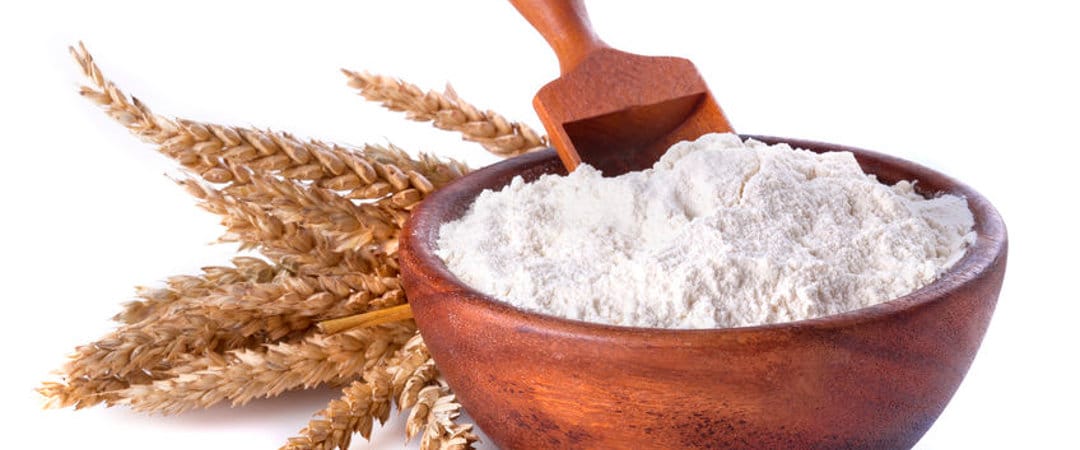3 Everyday Foods That Eradicated Epidemics
Have you ever noticed all the extra vitamins and minerals added to our foods? Ever wondered why the food companies bother to add all that extra stuff? It’s actually a pretty cool story! During the 20th century, researchers started discovering some fascinating and revolutionary connections between rampant diseases and the foods we eat every day. Soon after, public health agencies (namely the government) started recommending, or even mandating, the fortification of dietary staples to help eliminate some of these major public health problems. Here’s the stories of three major fortified foods, and why they have their now-omnipresent extras!

Milk
Who drinks the most milk? Small children, generally. And who had the highest prevalence of rickets in the early 1900s? Small children. Here’s the story of how vitamin D ended-up in your milk,
Rickets is the disease caused by a deficiency of vitamin D. It causes softening and weakening of the bones, and most famously presents as bowed legs in children. The softening is because vitamin D is needed to absorb calcium, without which the bones don’t have the minerals they need to grow strong. The biggest problem with rickets, however, is that even after the vitamin D is replaced, the bowing of the bones is often permanent – and sometimes disabling.
In the early 1920s, 75% of infants in New York City and about 80% of Bostonian children had the disease. Those numbers made it the most common nutritional condition in kids of the early 20th century. It’s actually not surprising that northern children were so afflicted by this deficiency given that vitamin D is not naturally present in many foods, and is only generated by our bodies in the presence of direct sun exposure (something distinctly lacking during the grey, northern winter months). Still, the sheer number of children with this deficiency makes it very understandable why health agencies were eager to solve the rickets problem.
So, in the 1940s, dairy companies started fortifying milk with vitamin D as part of a new public health policy. Milk was a natural choice because (a) milk is a great, natural source of calcium, and (b) kids drink a lot of milk. By providing the calcium for bones plus the vitamin needed to absorb it in the same kid-friendly drink, this fortification helped rates of rickets plummet across the country. Now it is relatively rare, and usually occurs only in the presence of another problem/disease.
If you didn’t know what rickets or bowed legs were before reading this article, you have the routine fortification milk to thank for the lack of these conditions.

Flour
Flour is an extra-special item in our food supply. Despite its recent bad reputation as promoted by low-carb dieters, flour is hugely important in preventing diseases. In present-day America, this staple is routinely fortified with both niacin and folic acid.
Niacin
First came niacin. Niacin, or vitamin B3, is naturally contained in various protein foods like poultry, beef and beans. However, severe deficiency of this nutrient causes a disease called pellagra. Pellagra causes the four Ds – dermatitis, diarrhea, dementia and death. In that order.
This deficiency disease first became widespread in the United States among confederate soldiers during the Civil War. Over the next century, it spread across the country. The prevalence of pellagra was largely because protein was not usually consumed daily, especially by the working class. Refrigeration was not widely available until the 1930s and proteins are expensive, making them hard to come by during the Great Depression and earlier. It was suspected that pellagra was linked to poverty and poor diet as early as the 1920s, but it wasn’t until 1937 that this hypothesis was confirmed.
In the 1940s, a public health policy came out that mandated the fortification of flour with niacin. This enrichment, in combination with the country’s general economic recovery during the 1940s, helped nearly eliminate pellagra in the States. Nutritionally at-risk populations still struggle with pellagra internationally, but in the US we can add this to the list of diseases that you no longer have to worry about due to food fortification!
Folic Acid
This component was a much later addition to wheat flour. Folic acid is the synthetic form of folate – a vitamin – and is used by our bodies in protein synthesis, including making and maintaining DNA. The reason folic acid is added to our food supply, however, isn’t for the average person’s DNA health. It is added to flour to help pregnant woman get the folic acid they need to avoid neural tube defects (NTDs) in their babies.
Neural tube defects, including spina bifida, occur when the tissue around the spinal cord doesn’t fully develop in a fetus. As a result, the babies with NTDs are born with exposed neural tissue. This can lead to significant disability, or even death, depending on how high and how severe the NTD is. Folic acid deficiency in the mother significantly increases an infant’s risk of developing a neural tube defect. It was the severity of this deficiency disease that drove public health agencies to address the issue.
Starting in 1998, all enriched cereal grains sold in the US – including flour – have been fortified with folic acid. Studies estimate that this has reduced the incidence of NTDs by anywhere from 25-50%. Many other countries have also implemented mandatory folic acid fortification programs in recent decades with aims to achieve similar reductions in this devastating condition.

Salt
Last but not least: salt. Salt is routinely fortified with iodine – called iodized salt – to help Americans get their daily allotment of iodine. However, unlike flour and milk, this fortification may be a little outdated. Nowadays, Americans get most of their iodine from dairy products and ocean-caught seafood. Still, when they started adding iodine to salt in the 1920s, this was a hugely important fortification effort.
A lack of iodine hinders production of thyroid hormones. In adults, this shortage causes a disease called goiter, while in infants and children it can result in mental & neural developmental delays. Goiter makes the thyroid gland in your neck swell. Low thyroid hormone can also increase the risk of weight gain, infertility and thyroid cancer.
In 1924, an estimated 30% of American adults suffered from goiter. So, some physicians decided to copy Switzerland and add iodine to the salt supply. By the mid-1930s, the prevalence of goiter in America was under 2%. At the time, iodizing salt was very important to the nutritional health of Americans.
However, over the next 50 years the dairy industry started using iodine-based disinfectants, reducing the public’s reliance on salt as a primary source of iodine. So, now experts can safely assure us that cutting salt intake won’t put us at risk for goiter. Still, 80 years ago, iodizing salt was a genius step forward in alleviating a public health crisis.
Did you know about the role of routine fortification in protecting you from disease? What do you think? Share with us in the comments section below!






